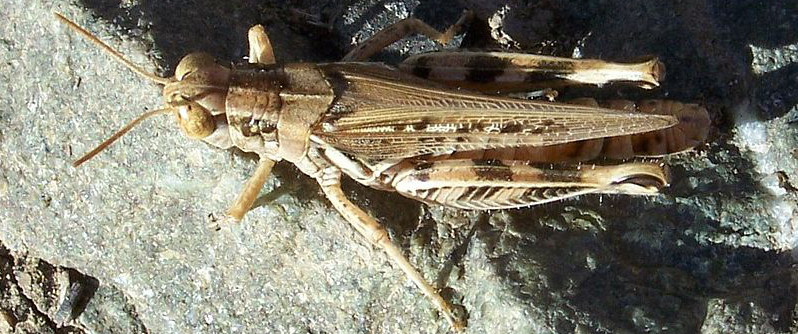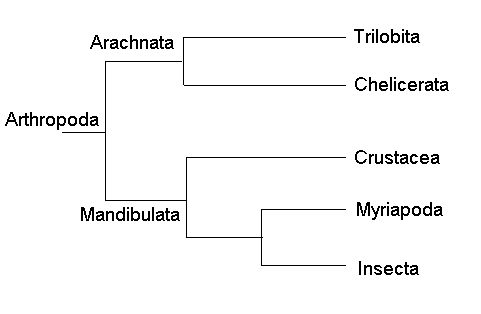
Classification
Domain- Eukarya
There are three major domains of life; Bacteria, Archaea, and
Eukarya. Eukaryotes have membrane bound organelles and nuclei.
Archaeans and Eukaryotes are more closely related to each other than
to members of the domain Bacteria.
Kingdom- Animalia
Metazoans, or members of the Animalia kingdom, are multicellular
heterotrophs (Myers 2001). These organisms exhibit great diversity
in size and complexity. Most of them reproduce sexually and have
specialized tissues (Myers 2001).
Phylum- Arthropoda
Arthropoda has the greatest species richness of all phyla, these
organisms are incredibly diverse and numerous (Myers 2001).
Arthropods display bilateral symmetry and in their embryonic stage,
they develop “mouth first” which makes them protostomes. Their
bodies have multiple segmented sections, and the body is covered by
chitin. The arthropod molts and regrows its chitin exoskeleton as it
increases in size (Myers 2001).
Class- Insecta
Habitat, behavior, and form are incredibly diverse characteristics
among this group. However, they do share commonalities of being
relatively small, having three-part bodies, large compound eyes, two
antennae, and six walking legs (Myers 2001). Insects have complex
digestive and nervous systems; they participate in internal, sexual
reproduction. Larva hatch from eggs and go through various processes
to reach their adult phase (Myers 2001).
Order- Orthoptera
Includes katydids, crickets, and grasshoppers and these organisms
exhibit diversity among each other and in their respective groups
(Whitman 2008). Increases in body mass and size influence the
functions and physiology of members of this order (Whitman 2008).
Females lay eggs in groupings known as clutches (Whitman 2008).
Family- Acrididae
Grasshoppers are classified as acridids (Smith et al. 2005). They
are heterotrophs that primarily feed on plants and occasionally on
decaying matter (Smith et al. 2005). Females are able to lay as many
as 100 eggs, she will usually deposit them in soil where they will
hatch and gradually go through metamorphosis until they reach
maturity (Smith et al. 2005).
Genus- Melanoplus
North American group of grasshoppers that includes over 230
different species (Chapco and Litzenberger 2002).
Species- Melanoplus devastator
This grasshopper lives in the western United States. More
specifically they can be found in the Sierra Nevada and Coast Range
areas of California. Melanoplus devastator is closely related to
Melanoplus sanguinipes, so close in fact, that they can hybridize
(Bentley and Philips 1992; Chapco and Litzenberger 2002). This
hybridization can lead to difficulty when attempting to identify the
devastating grasshopper.
This phylogenetic tree shows diversification of Phylum Arthropoda to which the devastating grasshopper belongs. Through further classification, we can conclude that the grasshopper is also in the class of Insecta because has a three-part segmented body with six walking legs. They also lay eggs that hatch into larva, and the larva grow into the adult stages through the molting of their chitin exoskeleton. These are characteristics of the Insects, so therefore, Melanoplus devastator is an insect.
In this phylogenetic tree of life, Melanoplus devastator belongs in the domain Eukarya. Eukaryotes are known for having membrane bound organelles. The grasshopper belongs in the kingdom Animalia. Animals are opisthokonts, and this major clade is known for posterior flagellum at some stage in its life. For the grasshoppers, this can be observed in the male gametes, or sperm.
Go back to the Home Page Continue on to Habitat.

